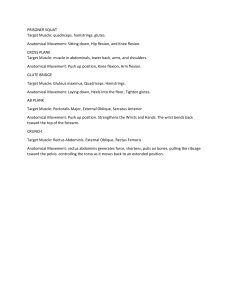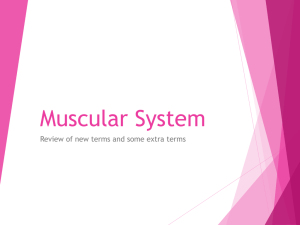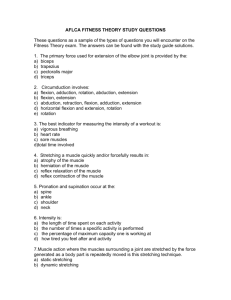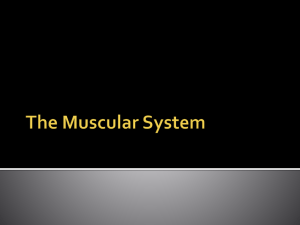Muscle Lab Muscle Attachments Muscle Attachments
advertisement
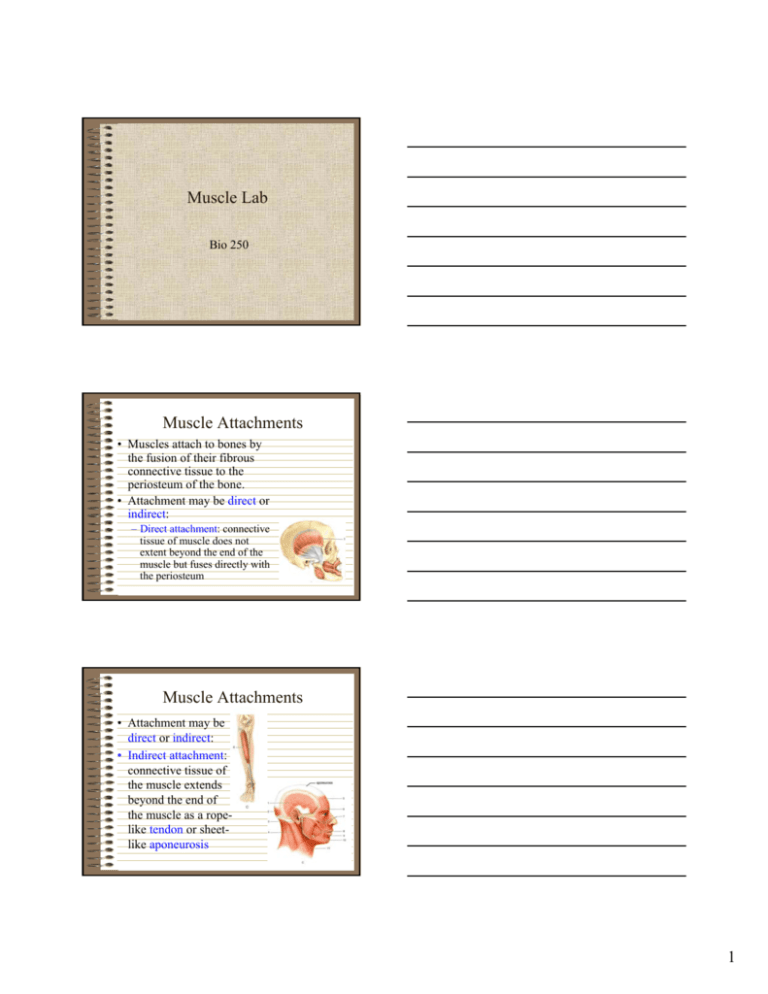
Muscle Lab Bio 250 Muscle Attachments • Muscles attach to bones by the fusion of their fibrous connective tissue to the periosteum of the bone. • Attachment may be direct or indirect: – Direct attachment: connective tissue of muscle does not extent beyond the end of the muscle but fuses directly with the periosteum Muscle Attachments • Attachment may be direct or indirect: • Indirect attachment: connective tissue of the muscle extends beyond the end of the muscle as a ropelike tendon or sheetlike aponeurosis 1 Muscle Attachments • The immoveable end of a muscle is called the origin • The moveable end of the muscle, where the action occurs, is called the insertion • Muscles may have several “heads” of origin and may be named as biceps, triceps or quadriceps. Naming of skeletal muscles– the more than 600 muscles of the body are named according to the following scheme: •Shape – e.g. rhomboid(eus) (like a rhomboid); deltoid(eus) (like a Deltoid or triangle); trapezius (trapezoid) •Location – e.g. pectoralis; intercostal; femoris; brachii •Attachment – e.g. zygomaticus; temporalis; Sternocleidomastoid(eus) •Number of Heads of Origin – e.g. biceps; triceps; quadriceps •Size – e.g. maximus/minimus; major/minor; longus/brevis •Direction of Fibers – e.g. rectus; transversus; obliquus •Relative position – e.g. lateral; medial; abdominal; internal •Function or action – e.g. adductor; flexor; levator; pronator; extensor 2 Movements at Articulations • Flexion/Extension (Link) (hyperextension) – Flexion reduces the angle between articulating bones – Extension increases the angle – Hyperextension increases angle beyond anatomical position • Abduction/Adduction (Link) – Abduction is movement away from the longitudinal axis of the body in the frontal plane – Adduction is returning limb to anatomical position • Dorsiflexion/Plantar flexion (Link) – These are “foot” words • Supination/Pronation (Link) – Supination turns the palm into the anatomical position (radius and ulna parallel) – Pronation turns the palm backward (radius crosses over ulna) • Inversion/Eversion (Link) – Inversion is a twisting the foot turning sole inward – Eversion turns the foot outward • Protraction/Retraction (Link) – Protraction entails moving a body part anteriorly in the horizontal plane (sticking out your tongue) – Retraction entails the reverse (pulling your tongue back) • Rotation is turning a part on its long axis (Link) • Circumduction is motion where terminus (Link) describes the circumference of a circle 3 4 5 6 Back 7 Back Back Back 8 Back Back Back 9
